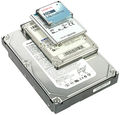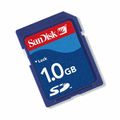Difference between revisions of "As-Is Checklist"
m |
(updated format and revised instructions) |
||
| Line 1: | Line 1: | ||
| − | + | __NOTOC__ | |
| + | '''Goals'''<br> | ||
| + | *Learn to use the Laptop Build Room tools to identify hardware components. | ||
| + | *Practice installing and removing hardware. | ||
| + | *Get some practice using the Power-On Self-Test (POST) Troubleshooting guide in the Appendix of your Laptop Build Binder. | ||
| − | + | ===1. Data security check=== | |
| − | + | {{Template:Data_Security_for_Builders}} | |
| − | + | ---- | |
| − | + | ===2. Find an appropriate AC adapter=== | |
| − | + | {{Template: AC_Adapter}} | |
| − | + | ---- | |
| − | + | ===3. POST=== | |
| − | + | ☐ Try turning the machine on. <br> | |
| − | + | *If the system loads the BIOS splash screen, you can move to the next step. | |
| − | + | *If the system does not boot, or appears to have screen or video problems, use '''sections 1 and 2 only''' in the [[Laptop POST Troubleshooting Guide]] in the Appendix. | |
| − | If | + | **As-Is laptops with video or screen problems should be recyled unless they are high-end systems. Double-check with your instructor if you are not sure. Use the '''Recycle''' guide in your binder. |
| − | + | ---- | |
| − | + | ===4. Determine specifications=== | |
| − | + | ☐ Enter BIOS. | |
| − | + | *Note the processor type and speed. | |
| − | + | *Note the amount of RAM installed. | |
| − | + | ☐ If processor and RAM information is not listed in BIOS, boot to the Free Geek network boot menu and use the Hardware Detection Tool. | |
| − | + | *Instructions for how to access the network boot are in the Appendix, in the [[Laptop Network Boot]] guide if you need help. | |
| − | + | ☐ Remove extra RAM. | |
| − | + | *Reduce the amount of installed RAM to no more than 512MB, as needed. | |
| − | + | **Use lower-capacity RAM sticks where possible (i.e. two 256MB sticks vs. one 512MB stick). | |
| − | + | ---- | |
| − | + | ===5. As-Is sticker=== | |
| − | + | ☐ Fill out the following fields: | |
| − | + | *Processor type | |
| + | *Processor speed | ||
| + | Do not fill out the AC adapter field, the store folks will take care of that one. | ||
| + | ---- | ||
| + | ===6. Remove stickers=== | ||
| + | ☐ Remove stickers: | ||
| + | *Microsoft stickers. | ||
| + | *Any sticker identifying the previous owner. | ||
| + | *Stickers added by the manufacturer (specs, model number, etc) should be left on the system. | ||
| + | ---- | ||
| + | ===7. Sign-off and final steps=== | ||
| + | ☐ Make sure the system is completely reassembled.<br> | ||
| + | ☐ Have your instructor sign off on your work. | ||
| + | *Ask your instructor if the AC adapter should stay with the laptop. | ||
| + | ☐ Put the laptop in the outgoing cart.<br> | ||
Revision as of 16:33, 18 December 2012
Goals
- Learn to use the Laptop Build Room tools to identify hardware components.
- Practice installing and removing hardware.
- Get some practice using the Power-On Self-Test (POST) Troubleshooting guide in the Appendix of your Laptop Build Binder.
1. Data security check
We are responsible for securely wiping or destroying any storage device that is donated to Free Geek. This commonly means removing hard drives to be wiped, but keep an eye out for other kinds of data storage devices as well.
What to keep in mind when removing hard drives
☐ Make sure to separate any caddy parts and adapters from the hard drive.
☐ Tape any caddy parts, adapters, and screws together back inside the hard drive bay. These should stay with the system unless your instructor needs them for parts.
☐ Only ever leave hard drives and other storage devices in a designated box or with your instructor.
Check for disks and other storage media
☐ Check the optical drive for disks.
- Look for the small quick-release hole on the faceplate, and use a paperclip to manually open the drive.
☐ Take a quick look for other kinds of media, let your instructor know if you find anything.
Commonly encountered storage devices:
- 3.5" hard drives (Desktop size)
- 2.5" hard drives (Laptop size)
- Optical disks
Less commonly encountered storage devices:
- 1.8" and other odd-sized small form-factor hard drives
- Mini PCI or mini PCIe solid state drives
- Small media cards (SD, Compact Flash, etc)
- SIM cards
- Floppy disks
- PCMCIA (PC Card) hard drives
- Examples
2. Find an appropriate AC adapter
Requirements
For an AC adapter to power the device correctly, it must:
- Match the input voltage (V) of the laptop exactly.
- Match or exceed the recommended amperage (A).
- Have a plug that fits into the laptop snugly and provides power.
☐ Find the input voltage and amperage listed on the laptop. This may be printed on the back of the laptop, or on the chassis under the battery.
☐ Find an AC adapter that matches the voltage and amperage listed on the laptop. You will be looking in the output section printed on the AC adapter, which should look like this:
INPUT: 100-240V~1.9A
50/60Hz
OUTPUT: 16V ⎓ 4.5A
Tip
AC adapters are sorted in bins by voltage, amperage, and brand; the bins are color-coded by brand.
3. POST
☐ Try turning the machine on.
- If the system loads the BIOS splash screen, you can move to the next step.
- If the system does not boot, or appears to have screen or video problems, use sections 1 and 2 only in the Laptop POST Troubleshooting Guide in the Appendix.
- As-Is laptops with video or screen problems should be recyled unless they are high-end systems. Double-check with your instructor if you are not sure. Use the Recycle guide in your binder.
4. Determine specifications
☐ Enter BIOS.
- Note the processor type and speed.
- Note the amount of RAM installed.
☐ If processor and RAM information is not listed in BIOS, boot to the Free Geek network boot menu and use the Hardware Detection Tool.
- Instructions for how to access the network boot are in the Appendix, in the Laptop Network Boot guide if you need help.
☐ Remove extra RAM.
- Reduce the amount of installed RAM to no more than 512MB, as needed.
- Use lower-capacity RAM sticks where possible (i.e. two 256MB sticks vs. one 512MB stick).
5. As-Is sticker
☐ Fill out the following fields:
- Processor type
- Processor speed
Do not fill out the AC adapter field, the store folks will take care of that one.
6. Remove stickers
☐ Remove stickers:
- Microsoft stickers.
- Any sticker identifying the previous owner.
- Stickers added by the manufacturer (specs, model number, etc) should be left on the system.
7. Sign-off and final steps
☐ Make sure the system is completely reassembled.
☐ Have your instructor sign off on your work.
- Ask your instructor if the AC adapter should stay with the laptop.
☐ Put the laptop in the outgoing cart.



